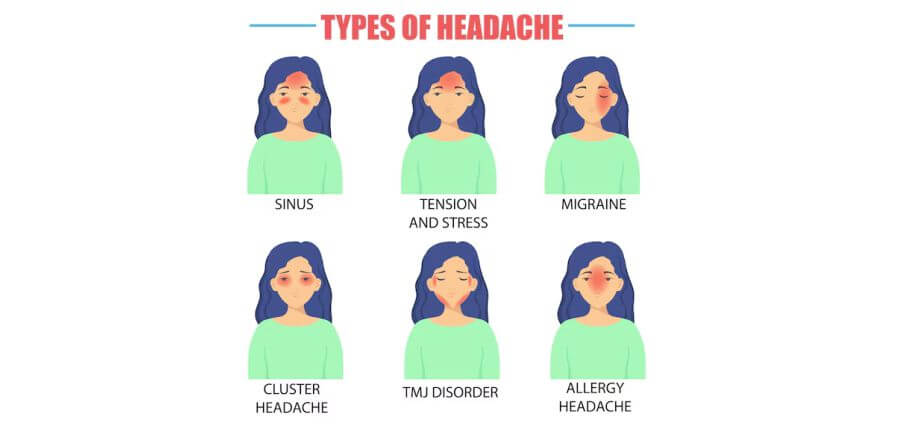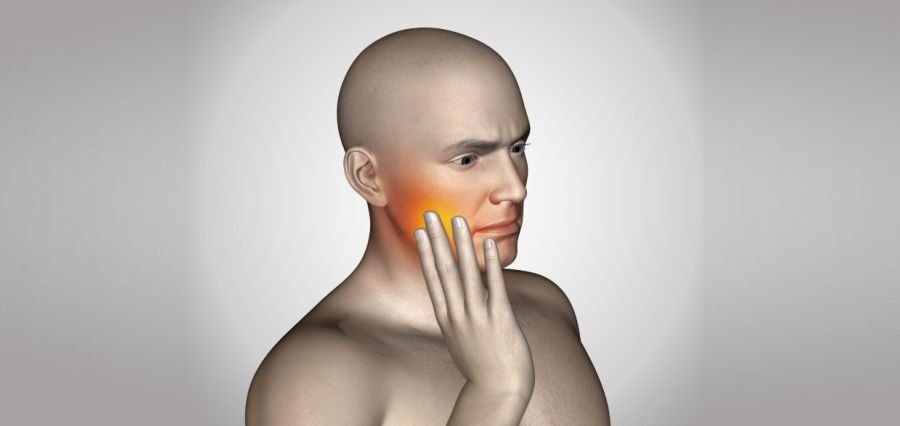Headaches are among the most frequently reported medical problems for individuals of all ages and genders. While most people only experience periodic headaches, certain types of headaches can be extremely uncomfortable.
Medical care providers must be aware of the various classifications of headaches and the etiologic factors associated with them for them to be properly analyzed and managed. This article will define the most common forms of headaches and dive into headaches’ causes and triggers.
- Tension Headaches
Tension headaches are the most prevalent of all types of headaches, with throbbing and mild to moderate pain on either side of the head. They are commonly the result of stress, inadequate posture at work or home, or irregular muscle contractions in the neck and scalp areas for prolonged periods of time.
People who sit at a desk all day or those who are under great emotional pressure are most at risk from this type of headache. These headaches are generally of moderate to mild intensity, but complicated cases may interfere with daily activities.
- Migraine Headaches
Migraine headaches are in a different league altogether, so to speak than tension-type headaches. Migraines are characterized by throbbing pain, which is normally unilateral and is often associated with nausea, photophobia, and sometimes auras. Migraines can last for up to several hours or days and may be induced by different stimuli.
The triggers for migraines are varied and can differ from one person to the next. Some of the known causes of migraines are changes in hormonal balance, consumption of certain foods, not drinking enough water, and glaring or pungent smells. The treatment for such conditions mostly consists of avoiding triggers and consuming medications prescribed by a physician.
- Cluster Headaches
Cluster headaches are relatively rare; however, they can be extremely severe, and they seem to occur in cycles and are often referred to as ‘cluster’ headaches. They tend to develop acutely, usually with severe burning or sharp, stabbing pains around one eye or on one side of the head.
Cluster headaches are short, but several episodes may occur during a cluster over a period of weeks or months. The cause of cluster headaches is not known well; however, fluctuations in one’s sleeping schedule and the use of alcohol or tobacco products may lead to the onset of headaches.
- Sinus Headaches
Sinus headaches occur when the sinus becomes infected or affected by an allergy or a respiratory illness. The pain is localized over the forehead, around the cheekbones, and between the eyes. The pain can worsen when the person sneezes, coughs, or moves their head suddenly or even if they bend over.
While other types of headaches are not commonly associated with symptoms such as nasal congestion, facial pressure, and fatigue, sinus headaches are. Most of the time, the headache is caused by increased pressure from a sinus infection or allergic reaction, and treatment for this is usually done accordingly. Sinus headaches may be managed with decongestants; antibiotics might be required at times.
Hormonal Headaches
Hormonal headaches are often experienced by people with hormonal fluctuations during their menstrual cycle, pregnancy, or the menopausal period. These headaches are said to be strongly associated with fluctuations in estrogen levels and can often be as severe as a migraine. Depending on the specific cause of these headaches, which may be connected with hormonal fluctuations, women may use birth control or H therapy to minimize the symptoms.
In conclusion, headaches are a common occurrence, but significantly impact daily life. Understanding the different types of headaches and their various their causes and triggers is essential for treatment.










